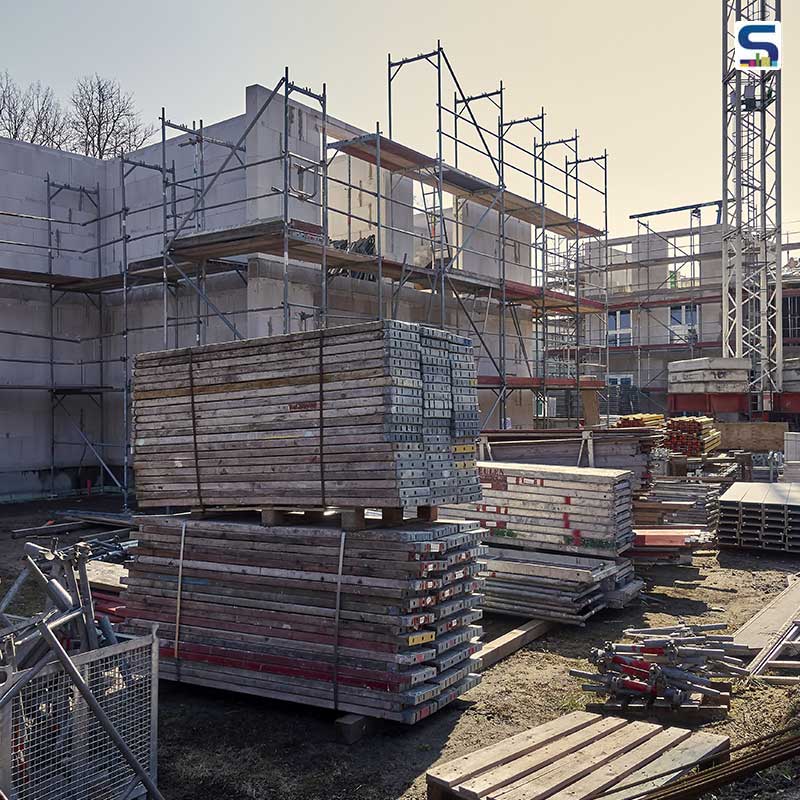
One of the industry having faced maximum impact of the pandemic in 2020, the building materials segment has displayed sheer resilience as it slowly bounced back in 2021. The industry regained its mojo at a steady pace. While initially in April & May, the second wave disrupted the momentum, from June onwards, the revival trajectory has been positive. This resurgence was further aided by the policy reforms like GST, RERA, REIT which were introduced to provide impetus to the sector. In 2022, provided the reforms like - Availability of housing loans to all segments (especially Affordable housing where the customer credit profiles may not meet standard financing norms), Long term funding support in case of long gestation projects and compulsory adherence to the contracts irrespective of political or policy changes, Continuation and further refinements in the tax sops available for housing industry and Recognizing Real Estate sector as part of Infrastructure, are introduced and financial impetus is provided to the industry, the sector is expected to show positive growth.
.png)
Today, the building material industry stands at around USD 225 Billion in terms of market size. The projected growth rate for 2022 is around 10%, and it is estimated to clock a CAGR growth of 8% to 9% in the next five years. In fact, sub-segment within this industry like Ready-Mix-Concrete, uPVC, Tiles are all gearing up for an exciting 2022.
The Ready-Mix-Concrete, uPVC and aluminium doors and windows, and the tiles segments are expected to recover and become stronger by gaining most of the pre-pandemic momentum back. The business and the demand looks promising. With people shifting to Work-from-Home/Hybrid working, and thus spending more time within the vicinity of their homes, there was an increase in the demand for building materials this year and this optimism will grow in 2022, where quality conscious customers will be further driving the demand and sales especially for high end products in these categories.
RMC demand in the retail segment is also expected to grow, given the increased construction of residential and commercial real estate projects. In the case of doors and windows, sliding & casement applications will continue to dominate the overall demand, given their superiority in terms of aesthetics, quality and functionality. Glazed Vitrified Tiles (GVT) are estimated to grow more in demand, due to their features like customisability and varied design options.
While demand forecasts and consumer buying trends look promising, this growth can only be made seamless by supportive government policies. There should be provisions to allow housing loans for all segments, irrespective of financial status. More often than not, affordable housing schemes and loans have to pass through tedious scrutiny because customer credit profiles may not meet standard financing norms. By introducing these provisions, surplus funds will be available in buyers’ hands thereby increasing demand. Developments in the housing sector directly impact the building materials industry, and by introducing norms that would enable greater investments and streamlining tax rates, the government would be bringing in a much needed relief for the segment. Giving real estate an infrastructure status will also boost the morale of the industry as a whole, and clearances will be faster. The scope for financial lending will also increase, thereby boosting completion of projects in the pipeline
2021 was also the year of aggressive technology adoption and incorporation. COVID-19 ushered in a lot of changes, both in work and home environments. From automating manual processes to leaning and incorporating new technology processes, the industry has undergone a huge paradigm shift. This is expected to strengthen further in 2022. Technology is going to continue playing a major role in 2022, especially with reference to home automation, and automation at work places. Innovations in building products like facial recognition, auto sensor lighting etc., are predicted to be some of the stand-out trends for 2022. Furthermore, products which intend to avoid human touch to prevent COVID spread, are anticipated to see an increase in demand.
The increasing cost of input materials is still impacting the overall demand and cash flow, the industry remains hopeful that the scenario will change and the coming year will see the prices and the situation stabilising.
Another key change the industry would witness is the shift to sustainability. With COP26 (26th UN Climate Change Conference of the Parties) making resolutions to fight the climate catastrophe, there is an increased focus on using and producing environmentally sustainable products, especially in the case of this industry. In 2022, the industry should attempt to minimise impact and use 100% recyclable products or eco-friendly products etc. wherever possible, for a sustainable future.
Img Source: https://www.longbeachconcreteservice.com/